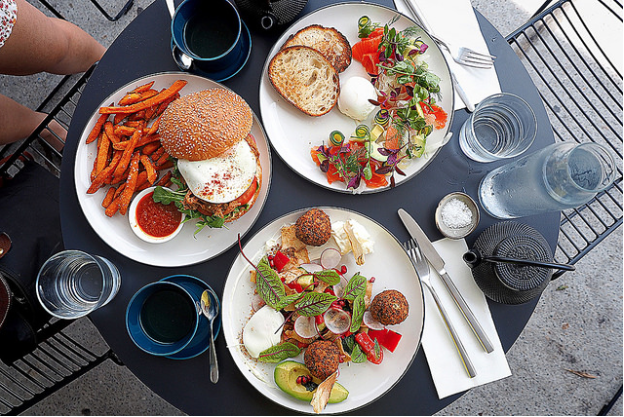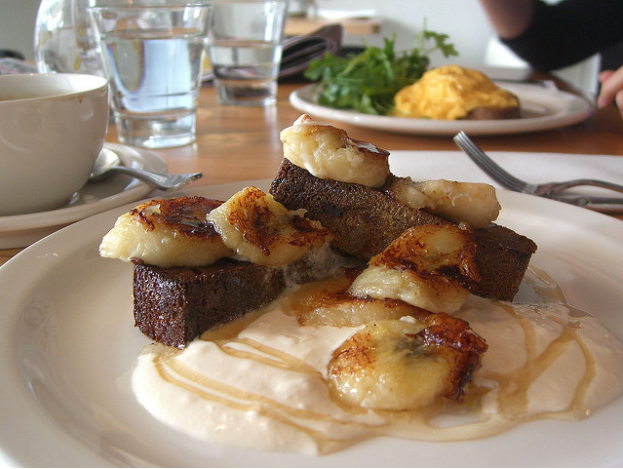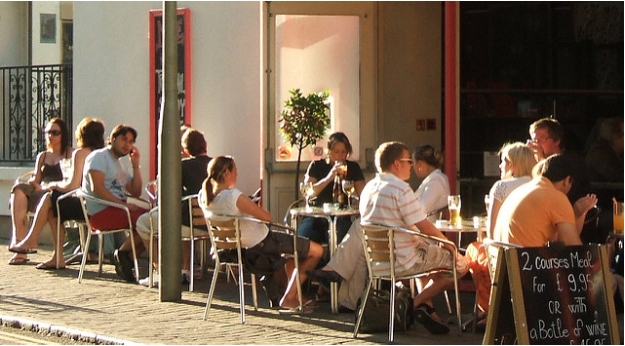 (Source: Flickr)
(Source: Flickr)
Here’s an important question for any restaurant owner: who is your target customer? Who are the customers you’re marketing to, who are frequenting your establishment, and who are keeping your business running? It may come as a surprise, but many restaurateurs don’t give this subject proper thought, which results in inefficient marketing efforts and service, which can discourage customers from making a return trip to your restaurant.
Investing a little time in figuring out who your target customer is will reap your business many rewards. For one, it can help you figure out how to streamline your offerings to cater to the crowd who is supporting you. For another, it can help you provide the most efficient marketing efforts and customer service to your customers, which will result in better sales, higher tips for servers, and an overall improved atmosphere for your business.
Here, we’ll discuss some easy ways to get to the heart of who your target customer is, and how you can better serve them.
- Ask yourself what type of customers you want. In an ideal world, what type of clientele do you want your restaurant to attract? If your answer is “everyone”, while that is optimistic, it’s not necessarily realistic. By trying to please everyone, you may in fact end up alienating different parts of the population.
In the long term, it may actually be beneficial to define who you want your target customer to be, so that you can create branding and a look and feel that will help you attract that clientele. For instance, do you want to attract urban hipsters? Or do you want your establishment to be family-friendly? This can inform how you tailor your business to be just right for them, and can help you mold your restaurant to attract this target customer.
- Look at your location. Your restaurant’s location will play a huge role in defining your target customer. For instance, if you are located on a bustling downtown street in a big city, chances are your target customer is going to be markedly different than if your restaurant is housed in a big old historic farmhouse in a country setting, or if it is part of a suburban strip mall.
Be sure to be realistic about who might be attracted to your restaurant in different types of settings. For instance, if you’re located in a suburban shopping center, chances are slim that your restaurant will become a hipster hot spot, but it might do a brisk business with the elderly, “early bird special” crowd and with families due to convenience and easy parking.
- Consider your concept. A restaurant’s concept can make it more alluring to particular demographics. For instance, if your restaurant serves old-fashioned, family-style Italian dishes, your target audience is probably not the power-lunch crowd; you’re more likely to do business in birthday parties, family get togethers, and rehearsal dinners.
Consider your concept and how it might appeal to different groups. For instance, if your restaurant creates high end, beautiful and creative sushi creations, your target audience will be a more urbane crowd; if you offer cheap drinks and 2 for 1 tacos, you might be marketing more to the college crowd.
 (Source: Flickr)
(Source: Flickr)
- What are your busiest times of day? Looking at the arc of customer influx throughout the day can help you define your target customer–but in addition, it can also help you adjust your opening hours and how you hire staff.
For instance, if your busiest time of day is between 5 and 7 pm, chances are, your target customer is professionals coming in for happy hour. If your busiest time of day is after 10pm, your target audience might just be people in the service industry. If you’re bustling from 4-6 pm but then dead after 7 pm, you might want to alter your offerings to cater to the early bird special crowd.
 (Source: Flickr)
(Source: Flickr)
- What are people buying? What is selling at your restaurant? Are you selling tons of tacos during your happy hour, or are you making most of your money during brunch service? Or is it your desserts that are really keeping you profitable?
Looking at what your restaurant is successfully selling can help you determine who your customers are, and how to expand your offerings to keep them happy.
 (Source: Flickr)
(Source: Flickr)
- Look at who is coming in the door. What type of people are actually coming in through the door? Is it college students? Tourists? Couples on first dates? Taking a long hard look at who is coming in the door can help you determine your target customer’s style.
Be realistic. Even if you have a vision of your restaurant as a date destination, if you see group after group of business diners coming through the door, it may be time to review and change your offerings to cater to that demographic. - Look at who is coming back to your restaurant. As important as it is to look at who is coming in the door, it’s of equal importance look at who is coming back through the door (and who isn’t). Return customers play a huge role in your restaurant’s long term success, and are therefore well worth taking a look at.
For example, if you notice that families and large groups are the biggest return customers in your establishment, it might be time to invest in more high chairs and to expand your kid’s menu.
- Read online reviews. While reading online reviews can be difficult at times, it can be very helpful in giving you a clear view of who likes and dislikes your restaurant. Reading the good reviews can help you form a picture of who it is who enjoys your restaurant and help you define your target customer. However, reading the bad reviews can be helpful too: not only can it give you ideas of how to improve, but it can also tell you who your marketing efforts are perhaps not best spent on. Why spend time and money advertising to a crowd who probably won’t frequent your restaurant anyway?
Conclusion: Taking the time to define your target customer is a pursuit well worth your time as a restaurant owner. Not only can it help you refine your marketing efforts to reach out to the most appropriate customers, but it can actually help increase your sales by allowing you to cater to the tastes of the people who are patronizing your establishment. By taking these steps to define your target audience, you’ll be taking action to improve the overall well-being of your business.
Who is your target customer?


